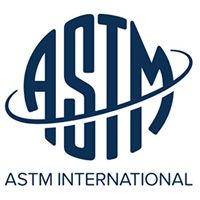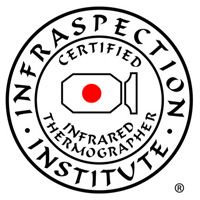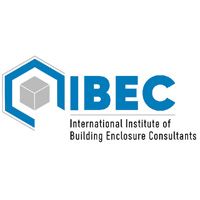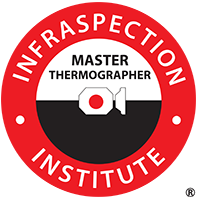About
About Us
Pioneers in the infrared industry, Jersey Infrared Consultants have been providing world-class infrared inspections and related services to thousands of clients since 1984.
We provide infrared inspections for preventive and predictive maintenance, condition assessment and monitoring, quality assurance, and forensics. All work is performed by Infraspection Institute Certified Infrared Thermographers® using the latest technology. Our expertise and capabilities are unmatched anywhere in the world.
Jersey Infrared Consultants’ other services include: expert witness services, sales and installation of infrared switchgear windows, and electrical testing and repairs.
We provide infrared inspections for preventive and predictive maintenance, condition assessment and monitoring, quality assurance, and forensics. All work is performed by Infraspection Institute Certified Infrared Thermographers® using the latest technology. Our expertise and capabilities are unmatched anywhere in the world.
Jersey Infrared Consultants’ other services include: expert witness services, sales and installation of infrared switchgear windows, and electrical testing and repairs.
Meet Our Team

Lucia Beach
President
Lucia Beach
President
Using her background in electrical contracting and business management, Lucia started Jersey Infrared Consultants in 1984. As President, Lucia overseas all aspects of the company.

Shelly Brady
Office
Shelly Brady
Office
Shelly’s “can do” attitude makes her a valuable member of our team. She multi tasks between reports processing, shipping support and office duties.

Michael Coin
Field Supervisor
Michael Coin
Field Supervisor
As the Field Supervisor and Safety Coordinator, Mike is responsible for quality assurance, safety compliance and customer satisfaction. Mike also handles many of the Building Envelope and Roof surveys. Level III Infraspection Institute Certified Infrared Thermographer® #8219.

Susan Coin
Office Manager
Susan Coin
Office Manager
As Office Manager, Sue organizes and coordinates the administative duties and procedures of our office. She is also responsible the accounting department, including accounts receivable and payable, as well as purchasing.

Hector Comulado
Thermographer
Hector Comulado
Thermographer
Hector’s experience in industrial operations provides him with great insight as a thermographer. He is a specialist in Infrared Electrical System Surveys and Infrared Mechanical Surveys. Level III Infraspection Institute Certified Infrared Thermographer® #12989.

Thomas Frail
Thermographer
Thomas Frail
Thermographer
Before joining us, Tom directed the Power Quality and Infrared Programs for Consolidated Edison Company. Utilizing his years of on-the-job experience, Tom specializes in Infrared Electrical System Surveys. Level III Infraspection Institute Certified Infrared Thermographer® #3340.
Infraspection Institute Master Thermographer™
Infraspection Institute Master Thermographer™

Beth Massaro
Vice President – Sales
Beth Massaro
Vice President – Sales
Utilizing her years of experience in sales, Beth leads the Jersey Infrared Consultants sales team. As Vice President of Sales, she oversees marketing, trade shows, sales, and training of sales staff.

Mary Molle
Vice President – Operations
Mary Molle
Vice President – Operations
As vice president of Operations with over 35 years experience, Mary actively works in sales and oversees daily operations. She is a member of RCI and currently serves on the Board of Directors of teh Metro NY Chapter of RCI. Level III Infraspection Institute Certified Infrared Thermographer® #1391.

Robert Richardson
Thermographer
Robert Richardson
Thermographer
With over 35 years of field experience, Robert is experienced in all Infrared Thermography applications. He has performed thousands of hours of specialized surveys at Petro Chemical sites and surveyed over a million square feet of roofs. Level III Infraspection Institute Certified Infrared Thermographer® #1410.
Infraspection Institute Master Thermographer™
Infraspection Institute Master Thermographer™

Kevin Schrack
Thermographer
Kevin Schrack
Thermographer
Kevin applies high enthusiasm and a “can do” attitude to every project. Qualified in all areas of commercial and industrial Infrared Thermography, he has performed thousands of hours of electrical surveys. Level III Infraspection Institute Certified Infrared Thermographer® #10901.
Infraspection Institute Master Thermographer™
Infraspection Institute Master Thermographer™

R. James Seffrin
Principal
R. James Seffrin
Principal
Jim is a principal and active thermographer for special projects. He handles expert witness services and oversees training. Jim is the Director of Infraspection Institute. Level III Infraspection Institute Certified Infrared Thermographer® #1131.
Infraspection Institute Master Thermographer™
Infraspection Institute Master Thermographer™

Wesley Witty
Thermographer
Kevin Schrack
Thermographer
After serving in the United State Army in field operations and as an instructor, Wesley has joined our staff. His extensive experience in mechanical system operations and attention to details gives him unique insights when performing Infrared Surveys. Level III Infraspection Institute Certified Infrared Thermographer® #10598
In Memoriam – Chris Seffrin

Christopher J. Seffrin (11/10/67 – 4/25/2012) was a co-founder of Jersey Infrared Consultants and a practicing thermographer with nearly 30 years experience as an infrared consultant. Chris performed and/or managed thousands of Infrared projects nationwide. He was instrumental in developing Jersey Infrared Consultants’ marketing and sales programs, as well as managing the field operations. He was also a member of and co-author of the Infraspection Institute series of Standards for Infrared Thermography…
Affiliations & Qualifications







